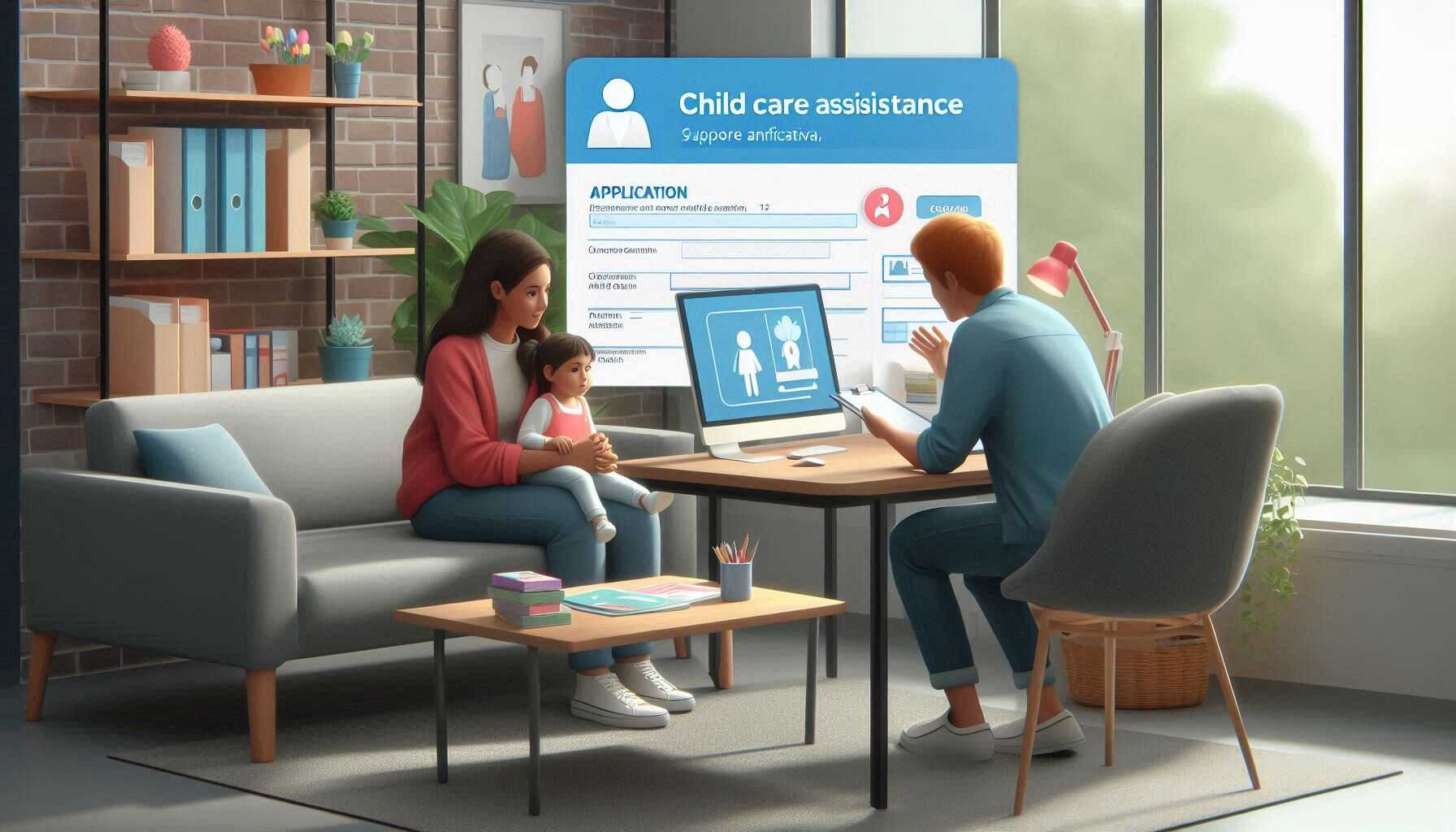[ad_1]
As a parent, you might find yourself standing at the crossroads of balancing work and family life. It’s a common struggle: how do you care for your little ones while juggling job responsibilities, all without breaking the bank? Child care can often feel like a maze of options, expenses, and endless paperwork. If you’re feeling overwhelmed, you’re not alone. Understanding child care assistance programs can turn that maze into a manageable path that leads to both childcare and financial relief.
In this guide, we’ll explore the ins and outs of child care assistance programs, highlighting their importance, benefits, and strategies to navigate them like a pro. You’ll discover practical tips to help you make informed decisions to benefit your family as well as how to overcome typical obstacles parents face. Together, we’ll break down this complex topic into bite-sized pieces, providing you with the confidence to find the perfect child care solution.
Understanding the Basics of Child Care Assistance Programs
Before diving deeper, let’s clarify what child care assistance programs are. These are government-funded or nonprofit initiatives designed to subsidize the costs of child care, making it more affordable for families—especially those with low to moderate incomes. The programs vary by state and can include financial assistance, vouchers, or direct funding to help cover child care expenses.
Why are they important? According to a report from the U.S. Department of Health & Human Services, over 15 million children under five years old require some form of child care. Unfortunately, quality child care can be an expensive endeavor; families often spend nearly 30% of their income on care alone. Child care assistance programs are not just a safety net for struggling families; they are essential pathways that provide essential support, helping children engage and thrive in safe, educational environments.
Key Benefits of Child Care Assistance Programs for Parents and Children
Child care assistance programs can significantly impact both parents and children in positive ways. Here are some key benefits:
-
- Affordability: The most obvious benefit is reduced financial burden. With assistance, parents can afford quality care without sacrificing their finances.
-
- Quality Care: Many assistance programs require providers to meet specific quality standards, ensuring that your child receives not only care but also early educational support.
-
- Workforce Participation: With reliable child care, parents can return to work or pursue education, leading to better job security and opportunities. This economic stability benefits the entire family.
-
- Socialization: Children in structured child care environments have the opportunity to socialize with peers, helping with emotional and social development, which can be beneficial in later schooling.
-
- Peace of Mind: Knowing your child is in a safe, nurturing, and educational environment allows parents to focus on work and life responsibilities without unnecessary anxiety.
These programs can pivot your family life towards a more balanced and positive trajectory, allowing you and your children to flourish.
10 Unforgettable Family Outings: Make Memories That Last a Lifetime
Common Challenges with Child Care Assistance Programs and How to Overcome Them

While child care assistance programs are incredibly helpful, navigating them comes with challenges. Here are some common ones you might encounter, along with practical solutions:
-
- Complex Application Processes:
-
- Solution: Break the process into smaller steps. Create a checklist of required documents (income verification, residency proof) and set deadlines. Utilize local resources or workshops that help families apply for assistance.
-
- Complex Application Processes:
-
- Limited Funding:
-
- Solution: Stay informed about eligibility criteria and funding changes in your state. Apply early once the application cycle opens, and also look for multiple programs you might qualify for.
-
- Limited Funding:
-
- Finding Quality Providers:
-
- Solution: Research local child care providers, focusing on those who are licensed and meet program criteria. Online reviews and community recommendations can be invaluable when looking for quality care.
-
- Finding Quality Providers:
-
- Lack of Knowledge:
-
- Solution: Attend community forums or workshops on child care assistance programs. Reach out to local parenting groups who can share their experiences and recommendations.
-
- Lack of Knowledge:
Navigating through these challenges might feel daunting at first, but with a bit of preparation and support, it’s achievable!
Expert-Recommended Child Care Assistance Strategies
Now that we’ve tackled some hurdles, how can you effectively navigate the child care assistance landscape? Here are some expert-backed strategies:
-
- Research Local Programs: Use government websites or local community centers to find child care programs available in your area. Each state has different offerings, so familiarize yourself with options close to home.
-
- Gather Essential Documents Early: Collect documents like tax returns, pay stubs, and identification. Having everything ready will speed up the application process.
-
- Network with Other Parents: Join local parenting groups online or in-person. Sharing experiences and advice can provide insights you might not have considered.
-
- Explore Flexible Payment Options: Some child care centers offer sliding scale fees based on income. Don’t hesitate to ask about discounts or payment plans.
-
- Visit Potential Providers: Schedule visits to potential child care centers to see how they operate and get a sense of their environment. This also allows you to ask questions directly.
-
- Stay Organized: Create a folder to store all your child care assistance program documents, communications, and notes. Keeping everything in one place can save you time and stress later.
These strategies will empower you as a parent, positioning you to make the best choices for your family.
Essential Child Care Assistance Tips for Different Age Groups
Child care needs vary significantly by age, so it’s essential to adapt your approach based on your child’s developmental stage:
-
- Infants (0-12 months): Look for providers who focus on nurturing and responsive care. Ensure they are familiar with safe sleep practices and have experience with infants.
-
- Toddlers (1-3 years): Choose a program that offers supervised play and early learning activities. By this age, children benefit greatly from socializing with peers.
-
- Preschoolers (3-5 years): Focus on programs that integrate pre-kindergarten curriculum with play. These can help foster early literacy and numeracy, preparing them for school.
-
- School-Age (5-12 years): Seek after-school programs that provide a balance of homework help, recreational activities, and socialization.
Tailoring your search to your child’s age-specific needs ensures you find the right support and learning environment.
Making Child Care Assistance Work for Your Family
Each family’s situation is unique, so adapting child care assistance to fit your specific needs is crucial. Here are personalized strategies to consider:
-
- Evaluate Your Family’s Schedule: Reflect on your work hours and your child’s activity needs. You might discover that part-time programs or staggered hours fit your lifestyle better.
-
- Communicate with Providers: Keep an open line of communication with your child care provider regarding any special needs or expectations you might have. Regular updates can ensure your child’s welfare and growth.
-
- Ask for Referrals: Use your social network to ask for personal recommendations. Families you trust can point you toward excellent care options that might not be widely advertised.
-
- Be Open to Change: If your first choice doesn’t meet your expectations, gather feedback, and be willing to explore other options. Child care needs can evolve, and being adaptable can yield better outcomes for your family.
By personalizing your approach to child care assistance, you are setting up your family for success.
When to Seek Professional Help with Child Care Assistance Programs
If you find yourself struggling significantly with child care issues, it may be time to seek expert help. Here are some warning signs to watch for:
-
- Overwhelming Stress: If managing your child care feels like an impossible task, it could be beneficial to speak with a family counselor or a child care specialist.
-
- Frequent Provider Changes: If you’re cycling through multiple child care providers frequently, consider consulting a local child care agency for guidance.
-
- Negative Impact on Family Dynamics: If child care issues are causing strain within your family, getting external help can provide insight and relief.
Professional resources, such as the National Child Care Information Center, can provide further assistance on navigating options or finding local experts.
Final Thoughts on Child Care Assistance Programs
Navigating the maze of child care assistance programs may seem challenging, but with the right strategies and resources, you can find a solution that works for your family. Remember the importance of being proactive, seeking help when needed, and adapting the available assistance to meet your family’s unique needs.
So take a deep breath and know that you’ve got this! Your determination to provide the best for your children is commendable, and with the right information, you can unlock the door to affordable, quality child care. Here’s to finding the perfect fit for your family!
Ready to explore your options? Start today! Visit your local resource center or check online to discover the child care support that suits your needs. You’ve already taken the first step by seeking information—now let’s turn that information into action!
[ad_2]



Comments are closed.